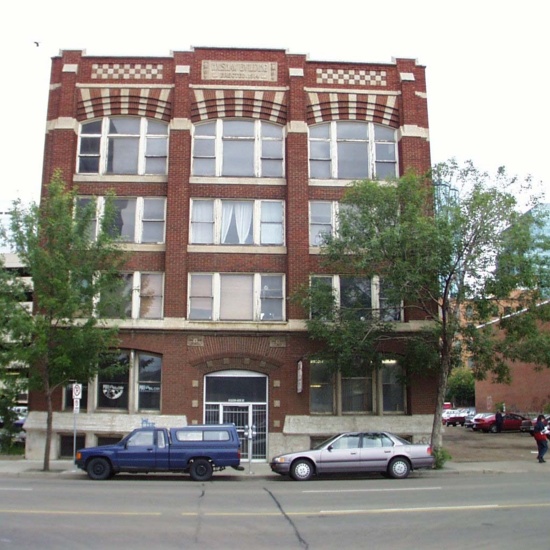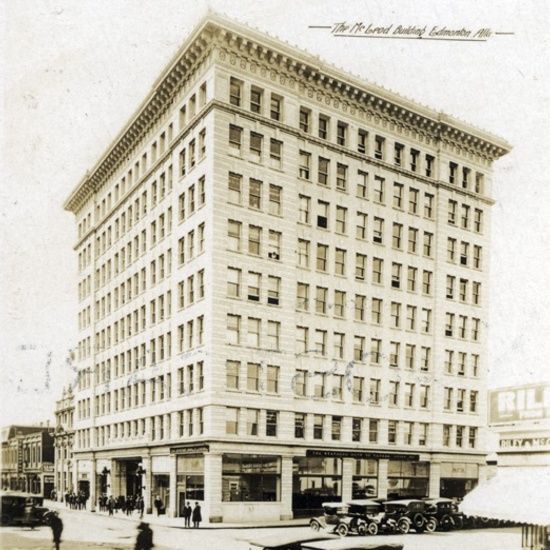Chicago
A school of architecture grew out of Chicago in the early 1900s and made its presence known across North America, including a few examples in Edmonton.
A school of architecture grew out of Chicago in the early 1900s and made its presence known across North America, including a few examples in Edmonton.
The Chicago school of architecture was responsible for setting a new standard in commercial design. Most notably, it looked to create the maximum amount of floor space on a piece of land by building vertically, which set the stage for modern skyscrapers. Primarily as a result of new technologies such as steel girders, concrete and the electric elevator, buildings could have greater physical height and larger expanses of open floor space. Exterior walls were no longer load bearing, which allowed for larger windows. The most striking characteristic is the grid-like organization of the windows. Popular in Edmonton in the 1900s and 1910s for use as office towers, many of these buildings in the Chicago style have since been converted into condominiums.
Characteristics
- Metal skeleton framing, first in cast and wrought iron, later in steel
- Stone or brick exterior
- Typically five or more stories in height
- Large divided rectangular windows, providing maximum light and ventilation
- A common window type is the "Chicago window," a three-part window with a large rectangular fixed central light flanked by two narrow, double-hung sashes
Details
Structures
Time Periods
Neighbourhoods
Character Defining Elements
Brick cladding, Brick structure, Carving, Chicago windows, Coping, Cornice, Date stone, Decorative brick, Flag pole, Flat roof, Keystone, L shape footprint, Metal structure, Painted signage, Rectangular footprint, Terra cotta, Three storeys or more, Triangular footprint


